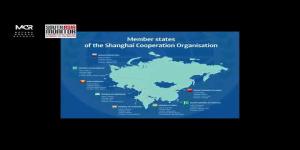The Asian Century by 2050: Three Possible Scenarios for Regional Power and Global Leadership
Whether dominated by China's singular might, led by India's democratic coalition, or governed through shared stewardship, the path Asia takes by 2050 will profoundly influence the global balance of power, ethical governance, and economic prosperity. India's role, whether as counterweight or partner to China, will be critical.

As the 21st century unfolds, Asia is poised to shape the global order economically, politically, and morally. The interactions between its two most influential powers, China and India, will be especially critical. By 2050, three main scenarios could define Asia's path and its influence on the world: one where China dominates unilaterally; one where India becomes the leading force with coalition partners; and one where both countries share responsibility for the region's future. Each scenario presents unique implications for the balance of power, governance, economic growth, and global moral leadership.
Scenario 1: China as the Dominant Power
In this scenario, China continues its rapid economic growth and technological modernization despite challenges like demographic shifts and debt burdens. By 2050, China could establish itself as the world's largest economy, accounting for over a third of global GDP. Its investments in infrastructure through initiatives such as the Belt and Road Initiative would have expanded its influence across Asia, Africa, and Latin America, creating a vast network intertwined with Chinese capital, technology, and military presence.
China's military modernization aims to create a top-tier global force capable of projecting power across key maritime routes, including the Indian Ocean and Pacific. Its influence in shaping international economic and governance standards could surpass Western-dominated institutions, with China advocating for an alternative multipolar world order aligned with its strategic goals.
However, this dominance might lead to increased geopolitical tensions. Rivalries with India and the United States could intensify, particularly over disputed territories and influence in the Indo-Pacific. Internally, China may face pressures to reform politically to allow more openness and social freedoms, but the authoritarian Communist Party is likely to keep tight control.
In this vision, China's rise may test global norms, with a focus on stability through strength and infrastructure development but limited emphasis on liberal democratic values. The global moral compass would tilt toward realpolitik, balancing economic pragmatism and state sovereignty.
Scenario 2: India as the Leading Power with Strategic Partnerships
Alternatively, India could rise to become Asia's leading global power by 2050, leveraging its democratic governance model, demographic dividend, and burgeoning economy projected to be the second or third largest globally. This scenario sees India consolidating its role as a coalition leader, actively collaborating with partners in the Quad (including the US, Japan, and Australia), as well as cultivating ties with Africa, Southeast Asia, and Central Asia.
India's success would depend on harnessing its large youthful population to drive innovation, manufacturing, and renewable energy aided by ambitious goals such as achieving net zero emissions by 2070 and cultivating green technologies. Its commitment to democratic pluralism, soft power through culture and diplomacy, and emphasis on fair and inclusive growth would set a contrasting tone to China's model.
India would serve as a counterbalance to China's assertiveness, maintaining vigilance over its borders while promoting a stable, inclusive Indo-Pacific order rooted in shared rule of law and human rights. Through this scenario, Asia would embody a multipolar, cooperative model with greater space for individual liberties and civil society to flourish.
Challenges include overcoming internal inequalities, climate change vulnerabilities, and infrastructure gaps. Yet India's pluralistic ethos could foster a more balanced global moral leadership aligned with fairness, equity, and sustainable development.
Scenario 3: Shared Stewardship and Multipolar Cooperation
A third, more optimistic scenario envisages China and India sharing stewardship of the Asian Century, balancing competition with cooperation to shape a multipolar regional order. Both powers would recognise their mutual dependencies, avoiding direct conflict while pursuing complementary roles.
China might continue its infrastructure and technological investments, while India leads on governance innovation, climate action, and democratic representation. Together, they could co-chair multilateral frameworks and institutions that reflect Asian values and address global challenges like poverty, inequality, and environmental sustainability.
This scenario would require both countries to mature politically China potentially adopting greater openness and India sustaining strong growth and social cohesion. Trust-building efforts, crisis management mechanisms, and collaborative economic corridors could underpin an Asia that is prosperous, stable, and morally responsible on the global stage.
The shared stewardship approach would highlight Asia's diversity and complexity, promoting a global moral compass centred on dialogue, inclusiveness, and respect for sovereignty and human rights. It offers the most hopeful blueprint for realising the full promise of the Asian Century without replicating past hegemonic mistakes.
Asia’s pivotal crossroads
These three scenarios highlight Asia's pivotal crossroads. Whether dominated by China's singular might, led by India's democratic coalition, or governed through shared stewardship, the path Asia takes by 2050 will profoundly influence the global balance of power, ethical governance, and economic prosperity. India's role, whether as counterweight or partner to China, will be critical in shaping a more inclusive, peaceful, and sustainable global future. The choices made today by these Asian giants and their neighbours will define whether the Asian Century is marked by confrontation or collaboration and ultimately, whether the global moral compass points toward justice or division.
(The writer, an Indian Army veteran and a former officer in the Armoured Corps, is a strategic analyst. Views expressed are personal. He can be reached at manojchannan@gmail.com; linkedIn www.linkedin.com/in/manoj-channan-3412635; X @manojchannan )










Post a Comment